Skip over navigation
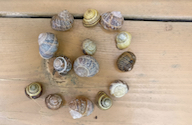
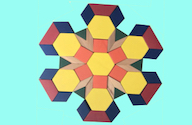
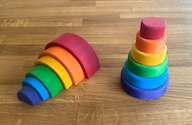
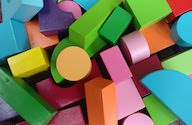
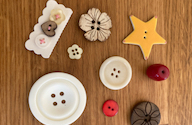
Children enjoy construction activities - and a challenge!
Adults could make simple models for children to try and copy.
Or search by topic
Number and algebra
Geometry and measure
Probability and statistics
Working mathematically
Advanced mathematics
For younger learners
Can You Build This?
Age 3 to 5
Exploring characteristics of shapes
Using both everyday and mathematical language to describe shapes, talk about positions and solve problems
Using both everyday and mathematical language to describe shapes, talk about positions and solve problems





Children enjoy construction activities - and a challenge!
Adults could make simple models for children to try and copy.
The Activity
The adult makes a simple construction with a few blocks or pieces of Lego, and challenges the child to copy it with the same pieces or from a selection. Use more different pieces to increase the challenge.
The adult makes a simple construction with a few blocks or pieces of Lego, and challenges the child to copy it with the same pieces or from a selection. Use more different pieces to increase the challenge.
Encouraging mathematical thinking and reasoning:
Describing
That's great! But look very closely: how is your model different from mine?
Which block do you need to put to the right of / above / below / behind this red one?
Your blocks are all pointing the same way - can you see these ones are crossways?
That's great! But look very closely: how is your model different from mine?
Which block do you need to put to the right of / above / below / behind this red one?
Your blocks are all pointing the same way - can you see these ones are crossways?
Reasoning
How do you think you need to change yours to make it look the same as mine?
How do you need to turn that brick to make it look the same?
How do you think you need to change yours to make it look the same as mine?
How do you need to turn that brick to make it look the same?
Opening Out
Take a photo of a secretly made model and see if the child can copy that, using the same pieces.
What do you think is at the back, underneath the red brick?
I've made a little model which I've got hidden under the table - I'll see if I can tell you how to make it. First, take a blue brick, then put a yellow one on top...
Can you make a secret model with five bricks and describe it for me to make?
Take a photo of a secretly made model and see if the child can copy that, using the same pieces.
What do you think is at the back, underneath the red brick?
I've made a little model which I've got hidden under the table - I'll see if I can tell you how to make it. First, take a blue brick, then put a yellow one on top...
Can you make a secret model with five bricks and describe it for me to make?
Recording
Let's take a photo of your best one and see if you can make it again tomorrow.
Can you do a drawing of your model?
Let's take a photo of your best one and see if you can make it again tomorrow.
Can you do a drawing of your model?
The Mathematical Journey
Properties of shapes:
- selecting appropriate blocks to match others, correctly identifying properties such as flat, curved etc.
- using informal shape language - sharp, slopey, pointy, like a brick, arch, box, roof etc.
- using mathematical shape language - corner, side, edge, flat, curved, rectangular, cylinder etc.
Properties of shapes:
- selecting appropriate blocks to match others, correctly identifying properties such as flat, curved etc.
- using informal shape language - sharp, slopey, pointy, like a brick, arch, box, roof etc.
- using mathematical shape language - corner, side, edge, flat, curved, rectangular, cylinder etc.
- copying arrangements and relative positions of bricks
- rotating pieces to match
- using positional language - on top of, next to, underneath, in front of, behind, between, left, right etc.
- constructing a 3D model from a 2D picture; identifying hidden pieces which are not visible in the picture; drawing a model with key features
Measures:
- identifying longer and shorter pieces to match those in the model
Development and Variation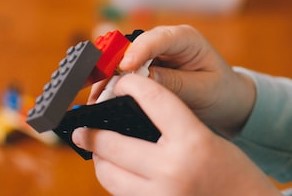
Make more complex models, with more pieces and varied shapes.
Use more challenging language like between, in front of, behind, overlapping, at right angles.
Show a model quickly and hide it again: can the child look closely then draw it from memory?
Make some pictures with 2D shapes, and draw outlines for children to fit shapes into. (See Learning Trajectories website for 2D 'picture maker' videos: https://www.learningtrajectories.org/)

Make more complex models, with more pieces and varied shapes.
Use more challenging language like between, in front of, behind, overlapping, at right angles.
Show a model quickly and hide it again: can the child look closely then draw it from memory?
Make some pictures with 2D shapes, and draw outlines for children to fit shapes into. (See Learning Trajectories website for 2D 'picture maker' videos: https://www.learningtrajectories.org/)
Resources
Building blocks, interlocking bricks, Lego or other construction material, 2D shapes and picture outlines
See Erikson Early Mathematics Collaborative website for other ideas: https://earlymath.erikson.edu/foundational-concepts/spatial-relationships/
Building blocks, interlocking bricks, Lego or other construction material, 2D shapes and picture outlines
See Erikson Early Mathematics Collaborative website for other ideas: https://earlymath.erikson.edu/foundational-concepts/spatial-relationships/
Download a PDF of this resource.
Acknowledgement: Penny Latham


